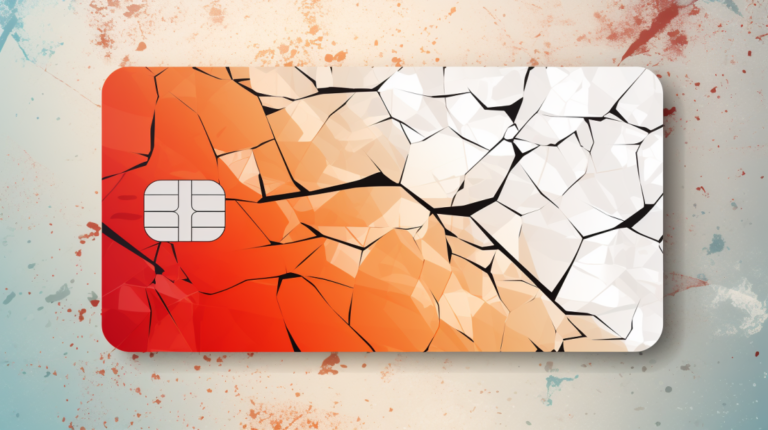How to Dispute Errors on Your Credit Report

Do you ever find yourself frantically worrying over errors on your credit report and the potential fallout they could have on your financial wellbeing? I completely understand. As someone who has walked in those exact shoes, and knowing that 1 in every 5 Americans are grappling with inaccuracies on their credit reports, I decided it was high time to thoroughly explore methods of contesting these mistakes.
This blog lays out a comprehensive step-by-step guide delineating how to pinpoint inaccuracies and effectively dispute them with the major credit bureaus. Let’s tackle those pesky errors today!
Key Takeaways
- You can check your credit reports for errors. Get a free copy from Experian, Equifax and TransUnion.
- Spot errors on the report like wrong account numbers or statuses, bad loan amounts or unknown addresses.
- To dispute these mistakes, collect proof like bank papers and send it to the bureaus.
- Wait for about 30 days after sending your dispute. Check updates often during this time.
Understanding Credit Report Errors
Credit report errors are more common than you may think and can stem from various mistakes including wrong account numbers, inaccurate credit limits or loan balances. Even unrecognized accounts or addresses where you’ve never lived could be wrongly listed on your report.
Identifying these discrepancies is crucial for maintaining an accurate credit history that reflects your actual financial habits and decisions, not subject to the implications of erroneous information.
Common mistakes that cause credit report errors

Mistakes can mess up your credit report. Here are some common ones:
- Wrong account status: The credit company mixed up if you paid on time or not.
- Wrong account numbers: This happens when they put the wrong digits in your account number.
- Inaccurate credit limits: Sometimes, they report a lower limit than you really have.
- Inaccurate loan balances: They might list the wrong balance of what you owe.
- Unrecognized accounts: These are accounts you did not open yourself.
- Addresses where you’ve never lived: If you see an address that is not yours, it might be from identity theft.
Identifying errors on your credit report
Finding mistakes on your credit report can be easy if you know what to look for. Let’s break down how you can check your report for errors:
- Start by getting a free copy of your credit reports from Experian, TransUnion, and Equifax. Every 12 months, you have the right to ask all three major credit bureaus for a free copy of your credit report.
- Look at all the details in each section of your report. This includes personal information, accounts, inquiries, public records, and potentially negative items.
- Keep an eye out for wrong account statuses or numbers. Also look for inaccurate credit limits or loan balances.
- Check if there are any unrecognized accounts or addresses where you’ve never lived – this could hint at identity theft.
- Look out for derogatory marks that are too old to be on the list anymore or negative information about accounts that don’t belong to you.
- Pay attention to incomplete reporting by creditors which often leads to inaccurate information.
How to Dispute Credit Report Errors
Start by reviewing your credit reports meticulously from all three bureaus – Experian, Equifax, and TransUnion. Highlight any errors you spot and gather necessary documentation that supports your dispute.
Next, submit these disputes directly to the credit bureaus involved. If the error persists after their investigation, reach out to the data furnisher such as lenders or collection agencies for further resolution.
Review your credit reports to identify errors
Let’s start fixing your credit. First, you need to look at your credit reports for any mistakes. Here is how:
- Go to a safe and secure site like AnnualCreditReport.com for your report.
- Look at the personal info part very closely.
- Go through all your accounts.
- Check dates and amounts of late payments.
- Look at all inquiries made on your account.
- Look at public records and negative parts of the reports.
- Spot any accounts that you do not know about.
Gather necessary documentation for your dispute

Getting the right papers is key to setting right errors on your credit report. Here’s a list to aid you:
- Copies of your credit reports with the errors circled.
- Proof of your name, such as a passport or driver’s license.
- Proof of your Social Security number – so keep your social security card handy.
- Evidence of living places you have stayed – like your utility bills or rental agreement.
- Account records that prove wrong reporting – such as bank statements and loan documents.
- Credit card statements to confirm faulty charges.
- Logs of phone calls, emails and any letters you sent in relation to the error.
Dispute the errors with the credit bureaus
Start the fight for a better credit report by disputing errors with the credit bureaus. You can do this in three clear steps.
- Choose how to dispute: Pick between mail, phone, or online to make your case. Each method is offered free of charge by all three major credit bureaus: Experian, Equifax, and TransUnion.
- Present your proof: You need to back up your claims. Gather all relevant supporting documents such as bank statements, loan papers, or credit card notes.
- File the dispute: Start the process by reaching out to the leading bureaus through their disputed sections. Use AnnualCreditReport.com until December 31, 2023, for free reports from Equifax, Experian, and TransUnion every week.
Contact the data furnisher if necessary
You need to reach out to the business that gave your data if you have big doubts. This could be a bank, credit card issuer, or loan agency. It’s their job to tell you why they put wrong information on your credit report.
Make sure you show them proof that they made a mistake. You can send a copy of the same letters and documents that you sent to the credit bureaus when disputing errors.
The Credit Dispute Process Explained

Unravel the somewhat intimidating labyrinth of disputing credit errors as we guide you through filing disputes with Equifax, Experian and TransUnion. Embrace this knowledge to not only safeguard your credit health but also pave the way for your future financial endeavors.
Dive in to discover more!
Filing a dispute with Equifax
Filing a dispute with Equifax is easy when you follow the right steps.
- Start by going to Equifax’s online portal.
- Find the section named “Dispute Center”.
- Click on it and you will find options to file a dispute through mail, phone or online.
- Select the option that suits you best.
- If you pick “Mail” or “Phone”, you have to note down the necessary contact information.
- For disputes by mail, send your supporting documentation via certified mail with a return receipt for proof that Equifax got it.
- In case you select the “Online” option, fill out the form provided on their website.
- They will ask for personal information like your name, Social Security number and more.
- You also need to provide details about the error in your report.
- After this, wait for 30 days as Equifax investigates your dispute.
- Check your alerts and status update regularly on their site.
Filing a dispute with Experian
Fixing errors on your credit report is very important. I found a mistake on my Experian report. This is how I disputed it:
- First, I went to the Experian online dispute form. It’s a secure site.
- There, I had to share some personal information. This included my name, address, and social security number.
- Next, I told them about the error that I saw on my credit report.
- Then, I gave them proof to back up my claim. This could be bank statements or loan documents.
- After that, I sent in my dispute form with all the information and waited for their reply.
- I checked their response to see if they fixed the problem.
Filing a dispute with TransUnion
Let’s dive into the process of filing a dispute with TransUnion. Here’s how you do it:
- Start by getting your credit report from TransUnion.
- Look for any info that may look wrong.
- Have proof ready to show that there is a mistake.
- Go to the TransUnion dispute online help page.
- Fill out the form on their site with your details.
- Send in any documents to aid your case via mail or upload online.
- The bureau, TransUnion, gets 30 days to look into your dispute.
What to Expect After Submitting Your Dispute

Once your dispute is submitted, anticipate a period of waiting as credit bureaus typically have 30 days to investigate your claim. This process may result in the error being corrected, removed or verified accurate.
If you disagree with their findings, consider extra steps such as adding a statement of dispute on your report.
Waiting for and reviewing responses
Once you send off your dispute, get ready to wait. The credit bureaus have 30 days to take a good look at it. During this time, stay calm and patient. When they are done, they will let you know what they found out.
You will get a letter or an email with their answers in it. Make sure you read this response carefully! It may tell you if the errors are gone from your report now or not.
Understanding possible dispute outcomes
Once you file a dispute, the credit bureau looks into it. After they look, three things could happen. The first thing is that they may clear the error and fix your report. This normally happens when there’s an easy-to-spot mistake or false info on your report.
If this happens to you, great! But be sure to check if they have corrected all mistakes in each reporting agency’s records.
The second outcome is that the credit bureau thinks no changes are needed after their probe. It just means they didn’t see what you believe as wrong info or an error.
Lastly, there might be any change but not how you want it to be done by them. You might think “They did not fix enough!” In such cases, don’t worry too much! You can request the credit bureaus put a note of dispute in your report for future checks.
How to handle disagreements with the credit bureau’s investigation
If the credit bureau doesn’t agree with you, don’t get upset. You still have steps to take. First, ask the credit bureau for a statement of your dispute. They will add this to your report anytime it gets checked.
Sometimes, the business that gave wrong details might not change them. In such cases, reach out to them again directly by mail or phone. Make sure you share whatever proof you have and request a correction.
What is the Importance of Reading Your Credit Report Before Disputing Errors?
Before disputing errors on your credit report, it is crucial to understand your credit report thoroughly. By reviewing it, you can identify inaccuracies, spot potential fraud, or detect discrepancies that may be affecting your creditworthiness. A comprehensive understanding of your credit report empowers you to address errors effectively and protect your financial reputation.
The Impact of Disputing on Your Credit Score

Having errors in your credit report can harm your credit score. This is why you need to dispute them. The act of disputing, however, does not hurt your scores itself. But what comes out of the dispute can change things.
If a mistake that caused a low score is fixed, like removing wrong late payment data or inaccurate loan balances, it will help boost your score. Your scores stay safe during dispute process time too.
It’s good practicing to check your reports often and address mistakes as soon as possible for accurate tracking of credit history.
Conclusion
Taking action is key when you spot errors on your credit report. The process of disputing can feel like a task, but don’t worry! Follow these steps and make sure all the info on your account is right.
Always remember – keeping an eye out for any mistakes in your report will keep your credit score healthy.
FAQs
1. What does it mean to dispute errors on your credit report?
To dispute errors on your credit report means requesting the credit bureau to check and correct mistakes, like incomplete information in your account.
2. Why is having an accurate credit report important?
An accurate credit report matters as it affects tasks such as getting a job or insurance, borrowing money, and making other financial decisions.
3. How do I check for mistakes on my Credit Report?
You need to be careful with identity theft and online security issues while shopping or donating online. Always review the collections account details regularly to identify scams or unwanted calls, emails, and texts.
4. What should I do if find mistakes in my Credit Report?
If you notice incorrect bankruptcy information, inaccurate debt records or any wrong data; then you have rights to start a dispute investigation process via government office consumer advice agencies like Federal Trade Commission or Consumer Financial Protection Bureau.
5. Who fixes the disputes once they are filed?
The business that supplied the information is responsible for checking the verification of disputed results and either correcting them with corrected information or deleting false data from reports accordingly after ensuring their proof identities using Government-issued identification methods like Equifax’s online portal.
6.What happens when my dispute gets verified?
Once verified by collection agency furnishing info originally; if changes were needed: then deletion of inaccurate / addition of missing info takes place improving personal finance history status influencing future approvals regarding loans/debt applications positively building good credit over time.






